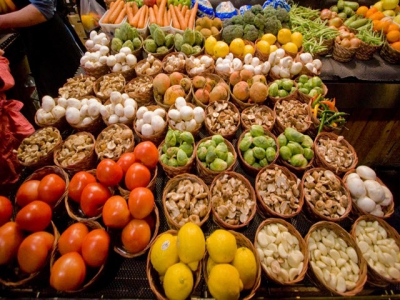Trends, branding paramount for agricultural exports to Europe

Experts have warned local producers that they must work hard, not only to create quality products, but to keep up with consumption trends and enhance their branding and marketing strategies if they desire to make their products receptive to the European market.
Europe has remained the second largest export market for Vietnamese goods, representing 18 per cent of the country’s total exports in recent years.
The honey export company Minh Tam has so far proved efficient in penetrating the European market. Thanks to its non-stop and concerted efforts in seeking reliable sources of market information and branding under the country’s program aimed at bolstering exports to Europe, the honey exporter has gained a foothold in the market and is enjoying an increasing export turnover, said Nguyen Thanh Tam, director of the firm.
Tam noted that his firm has even been among the top companies exporting honey to the European market.
According to Nguyen Thi Quynh Ngoc from the Vietnam Trade Promotion Agency, the popularity of Vietnam-branded agricultural products is yet to spread worldwide. Therefore, along with trade promotions, Ngoc urged local producers and exporters to work on making their farm produce stand out from those in other countries.
Additionally, she underscored the need to outline long-term business strategies, including those aimed at improving exporters’ competitiveness against their overseas rivals.
Reindert Dekker, an expert from the Netherlands’ Centre for the Promotion of Imports from Developing Countries, stressed that Europe is a demanding market with many strict standards set for food quality and safety.
Dekker added that in order to reach the European market, local businesses need to keep up with consumption trends within their sectors. Branding is another important factor in the European market and local firms must offer fresh products with eye-catching branding.
He emphasised the significance of meeting requirements regarding the origin and quality of goods as well as cutting-edge production processes as consumers now want to know where products are produced.
The Dutch expert reaffirmed more stringent requirements for chemical residue on exports to Europe.
Local businesses need to promptly keep pace with new market trends so as to improve their export capacity and graps opportunities. They should pay attention to creating quality products but also raise their awareness of the necessity of a good branding and marketing strategy.
In recent years, Europe has become a major trading partner of Vietnam, while the continent has remained the second largest export market for Vietnamese goods, representing 18 per cent of the country’s total exports. Of note, agro-forestry-aquatic products are prefered by European consumers.
In order to deepen their market penetration, experts have called upon domestic businesses and producers to pay more attention to developing standardised material production areas that ensure the compliance of safety criteria set by the European market.
Related news
 Pork price forecast to drop sharply
Pork price forecast to drop sharply Pork prices on the local market are dropping by some VND5,000-VND8,000 per kilogram versus those recorded in late February
 Da Lat’s farms turn modern in Industry 4.0
Da Lat’s farms turn modern in Industry 4.0 Da Lat city in Lam Dong province has become well-known for its modern agricultural techniques. Many of Vietnam’s wealthy farmers are situated
 Making efforts to boost rice exports
Making efforts to boost rice exports Vietnam's rice export volume was estimated at 1.43 million tonnes, worth US$ 593 million, down 3.5% in volume and 20.2% in value over the same period in 2018